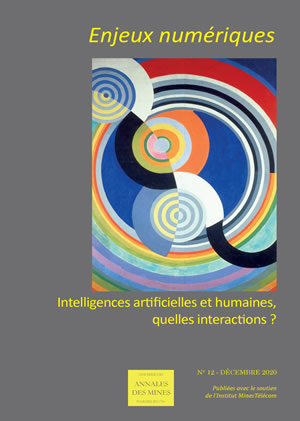|
 N° 12 - Décembre 2020 - Intelligences artificielles et humaines, quelles interactions ? N° 12 - Décembre 2020 - Intelligences artificielles et humaines, quelles interactions ?
Des interfaces traditionnelles hommes-machines aux machines empathiques : vers une coadaptation humain-machine
Laurence DEVILLERS
Le domaine de l’"affective computing" est par essence pluridisciplinaire, en regroupant trois technologies : la reconnaissance des émotions des humains, le raisonnement et la prise de décision en utilisant les informations recueillies, et la génération d’expressions émotionnelles. La sphère des émotions que l’on pouvait penser propre à l’humain envahit les machines qui se rapprochent des capacités humaines. Dans le cas de maltraitance d’un robot notamment, l’être humain peut ressentir de l’empathie envers un agent artificiel, alors que ce dernier ne fait que simuler des émotions et ne peut pas souffrir. La machine est programmée, sans intention ni désir propres, mais il faut le rappeler. L’arrivée des robots empathiques soulève depuis peu de nombreuses questions éthiques, juridiques et sociales.
 Télécharger gratuitement l'article Télécharger gratuitement l'article
 Retour au sommaire Retour au sommaire
 N° 12 - December - Artificial and human intelligences: What interactions? N° 12 - December - Artificial and human intelligences: What interactions?
From traditional man-machine interfaces to empathic machines: Toward a coadaptation
Laurence DEVILLERS
The multidisciplinary field of “affective computing” groups three sorts of technology: the recognition of human emotions; deliberation (reasoning and the making of decisions based on the information gathered); and the generation of emotional expressions. The sphere of emotions, which we might imagine as being specifically human, is encompassing machines as the latter are increasingly endowed with human capacities. When a robot is mistreated, a human being might feel empathy toward this artificial agent, which is merely simulating emotions and cannot suffer. The machine is programmed; it lacks intentionality and has no desires of its own. The coming of empathic robots raises ethical, legal and social questions…
 Download full article Download full article
 Retour au sommaire Retour au sommaire
|




